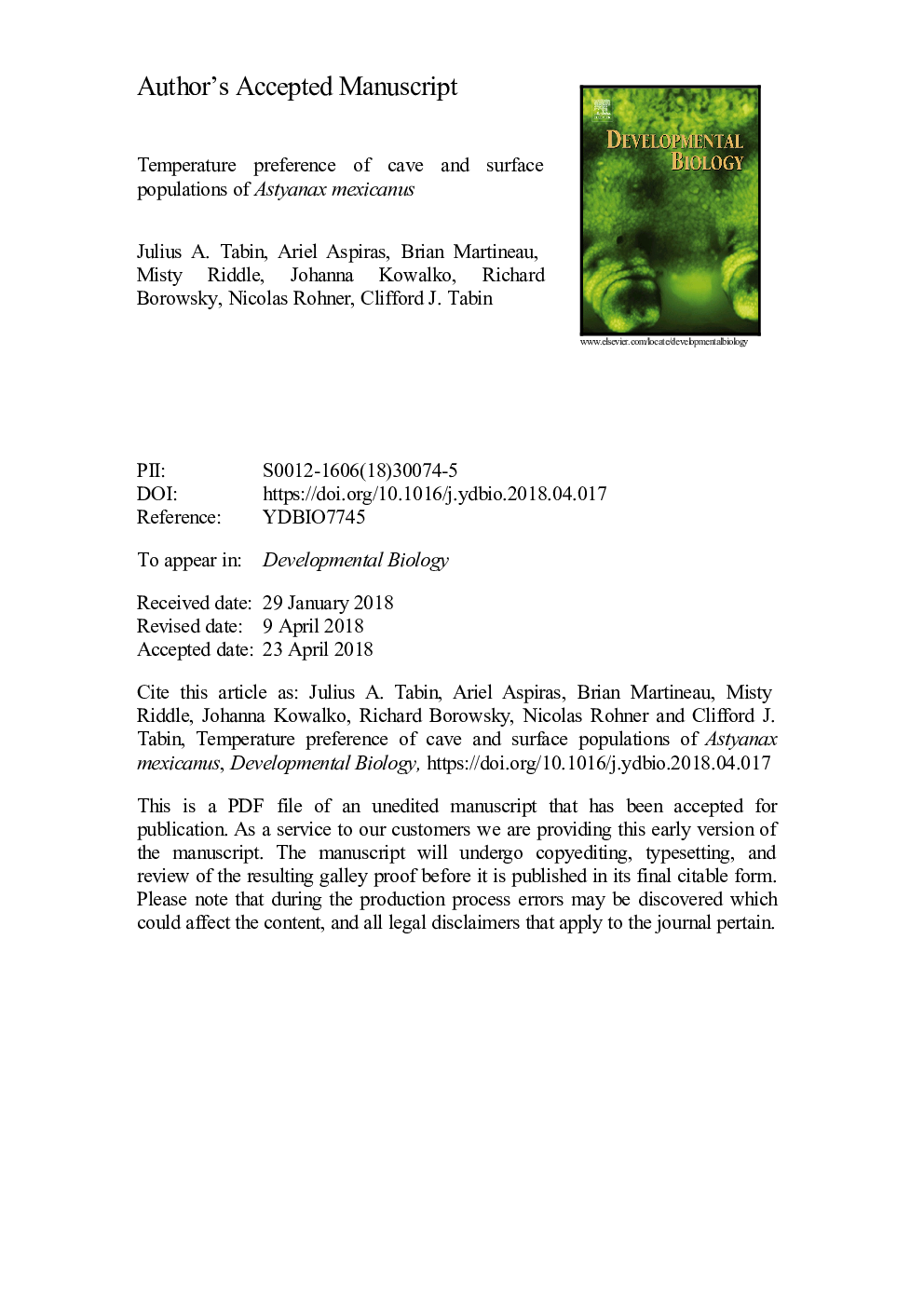| کد مقاله | کد نشریه | سال انتشار | مقاله انگلیسی | نسخه تمام متن |
|---|---|---|---|---|
| 8956290 | 1646143 | 2018 | 26 صفحه PDF | دانلود رایگان |
عنوان انگلیسی مقاله ISI
Temperature preference of cave and surface populations of Astyanax mexicanus
ترجمه فارسی عنوان
ترجیح درجه حرارت غار و جمعیت های سطح آستیناکس مکزیکنوس
دانلود مقاله + سفارش ترجمه
دانلود مقاله ISI انگلیسی
رایگان برای ایرانیان
کلمات کلیدی
موضوعات مرتبط
علوم زیستی و بیوفناوری
بیوشیمی، ژنتیک و زیست شناسی مولکولی
بیولوژی سلول
چکیده انگلیسی
Little is known about the genetic basis of behavioral choice, such as temperature preference, especially in natural populations. Thermal preference can play a key role in habitat selection, for example in aquatic species. Examining this behavior on a genetic level requires access to individuals or populations of the same species that display distinct temperature preferences. Caves provide a uniquely advantageous setting to tackle this problem, as animals colonizing caves encounter an environment that generally has a different, and far more stable, annual temperature than what is encountered on the outside. Here, we focus on cave and surface populations of Astyanax mexicanus, the Mexican tetra, and examine temperature preference and strength of temperature preference (reflected in the percent of time spent at the optimal temperature). We used a tank with a stable temperature gradient and automated tracking software to follow individual fish from each population. We found that distinct populations of A. mexicanus display differences in both temperature preference and strength of preference. Hybrid crosses established that these are multigenic traits that segregate independently from one another. Temperature preference in many aquatic animals is known to shift towards warmer temperatures following infection with parasites (akin to a fever response in humans). While surface fish infected by the ectoparasite Gyrodactylus turnbulli (a gill fluke) displayed a strong fever response, cavefish showed a significantly attenuated fever response. This work establishes A. mexicanus as a genetically tractable system in which differences in temperature preference can be studied in naturally evolved populations.
ناشر
Database: Elsevier - ScienceDirect (ساینس دایرکت)
Journal: Developmental Biology - Volume 441, Issue 2, 15 September 2018, Pages 338-344
Journal: Developmental Biology - Volume 441, Issue 2, 15 September 2018, Pages 338-344
نویسندگان
Julius A. Tabin, Ariel Aspiras, Brian Martineau, Misty Riddle, Johanna Kowalko, Richard Borowsky, Nicolas Rohner, Clifford J. Tabin,
